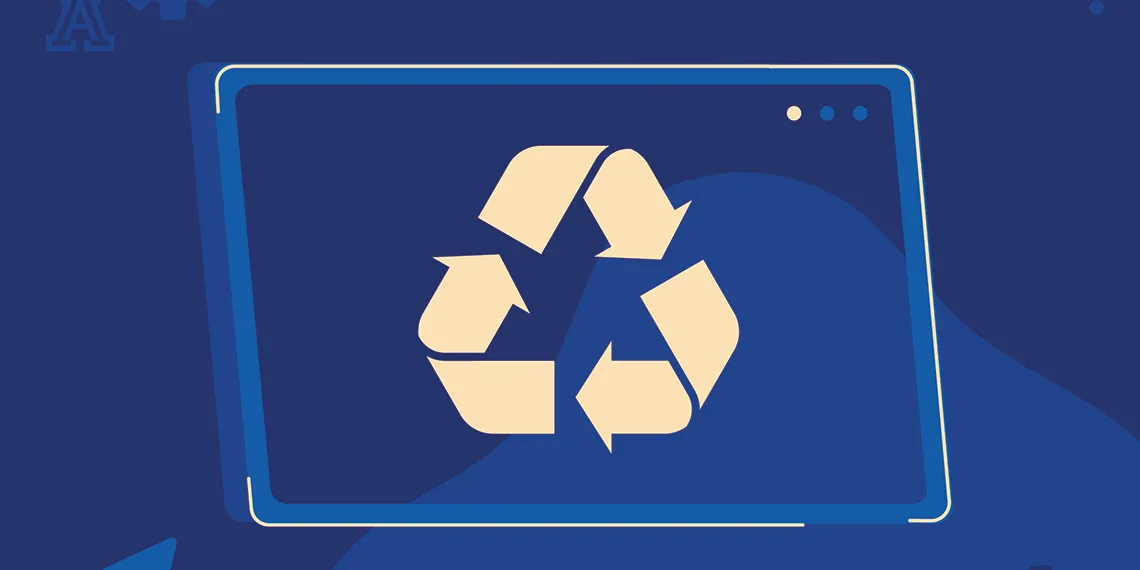Clean Up Your Classroom: Reducing, Reusing, and Recycling Educational Technology for a Better Learning Experience
"Reduce. Reuse. Recycle." We've all heard it in regard to our shopping practices. But is there something here that we can apply to our teaching practices?

"Reduce. Reuse. Recycle." We've all heard it in regard to our shopping practices. But is there something here that we can apply to our teaching practices? Especially if one traces back-to-back sessions, it is easy to reuse the same content and activities over and over again. This can make sense, as student learning outcomes may not change from semester to semester, and various activities are often added rather than refined and consolidated. Less is often more when it comes to technology use. By focusing on a select few high-quality tools that align with your learning outcomes, you can avoid the pitfalls of adopting every new app or platform on the market. To create an efficient digital learning environment, we encourage you to assess each tool based on its effectiveness, relevance, and necessity and eliminate redundancies. Below are some tips you can explore to help you reduce, reuse, and recycle technology for more efficient and impactful teaching.
Here are some guiding questions to consider asking yourself this Spring:
Reduce: Can I eliminate any redundant or unnecessary tools from my current course? When deciding to remove a tech tool from your teaching repertoire, it is important to evaluate the necessity and effectiveness of the tool using the following criteria:
- Alignment with learning outcomes: check if the tool directly supports your student learning outcomes. For example, if asking students to synthesize information, do your current tools maximize their ability to create in-depth and unique responses?
- Student engagement and learning: check if the tool enhances student engagement and promotes a deeper understanding of the material. Is there an alternate tool that would allow students to review and give feedback on each other's work rather than work in isolation?
- Redundancy: check if the tool's functions overlap with those of other tools in your repertoire. If multiple tools serve the same purpose, choose the most effective one and eliminate the rest.
- Ease of use and accessibility: check if the tool is user-friendly and accessible for you and your students. Is there an alternative to your tool that supports mobile devices? Is there an alternative that can be embedded into D2L's content rather than being linked out?
Reuse: Is there a tool that is more appropriate for my courses and students? You may want to consider if there are newer tools, or tools supported by UArizona, that are more appropriate for your course's context. For example, instead of linking out to a Youtube video and having students submit responses to the video in the Assignments folder, you may find that adding the questions you've already developed to a Playposit bulb is a better truncated and engaging experience. You can find more on how to use PlayPosit here.
Recycle: How can I refresh the tools and/or content I've already worked with? Sometimes things need to be broken down and rebuilt from the ground up. When looking at your already-developed materials, reflect on how the content can be more engaging. Do you have some meaningful, thought-provoking discussion questions written down that you normally assign in the D2L discussion board or a Google Jamboard? Do you normally promote text responses? Examine if this is an opportunity for video or voice responses from your students. You can use UArizona's supported Voicethread to give students the opportunity to share their responses verbally.
In conclusion, semesters go by quickly. Incorporating a yearly "Spring Cleaning" session into your year can help refine your teaching and better the student learning experience. As always, UCATT is here to help. Schedule a consultation with RIQA's instructional technologist, Samantha Maxwell, and get started today!


